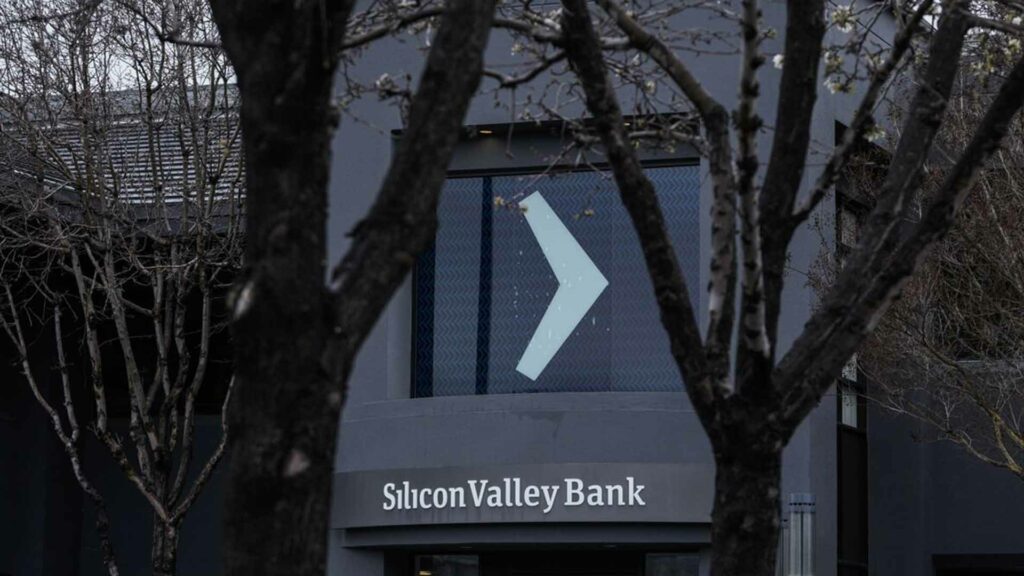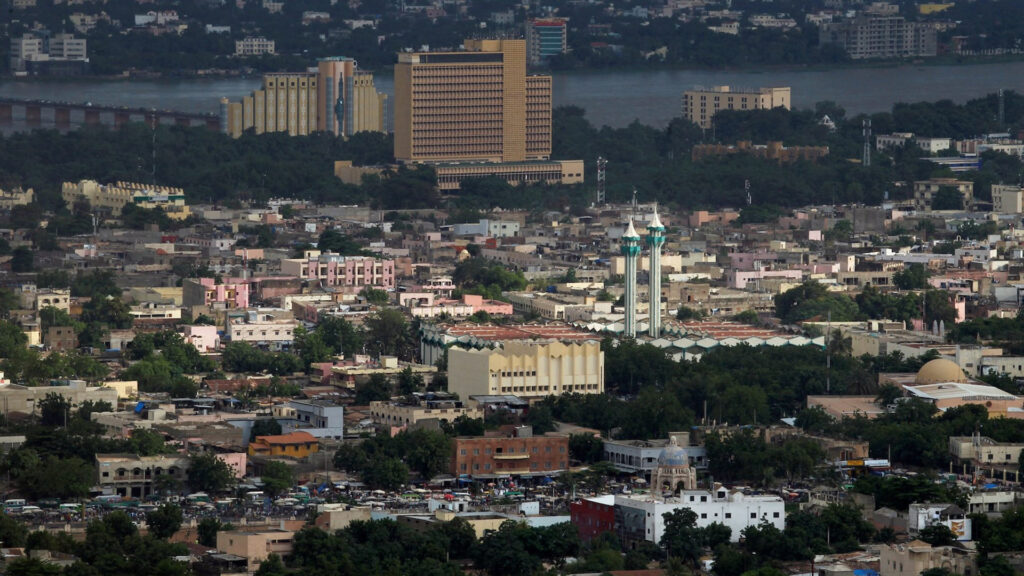Silicon Valley Bank (SVB), a leading lender to technology startups, has suffered the second-largest bank failure in United States history. The bank was based in Santa Clara, California and was established in 1982. It specialized in providing loans to technology and life sciences companies and had become a well-known name in the startup community.
However, in early 2023, SVB experienced financial difficulties due to a variety of factors, including high levels of non-performing loans and a decline in the performance of its investment portfolio. These issues ultimately led to the bank's failure and its subsequent closure by federal regulators.
The failure of SVB is a significant event in the financial industry and has been met with shock and concern from the technology startup community. Many entrepreneurs and investors had relied on the bank's specialized services and expertise, and its closure is expected to have far-reaching consequences.
It is also notable for its place in history as the second-largest bank failure in the United States, following only the collapse of Washington Mutual in 2008.
As the technology sector continues to grow and evolve, the fate of Silicon Valley Bank serves as a cautionary tale for both established companies and startups. The importance of sound financial management and risk mitigation strategies cannot be overstated, and the events surrounding SVB's failure will likely prompt many businesses to reevaluate their practices and procedures.

What Silicon Valley Bank collapse means for the U.S. financial system
The collapse of Silicon Valley Bank has served as a stark reminder of the fragility of the U.S. financial system. The sudden failure of such a prominent lender shows that even careful and well-managed banks can run into trouble. What's more, this incident demonstrates just how interconnected the US financial system is: when one bank fails, it can have ripple effects throughout the industry.
For consumers, it's important to remember that their deposits are insured by the Federal Deposit Insurance Corporation (FDIC) up to $250,000 per account. This means that in most cases there should be no need for alarm if your bank suddenly fails – you will be able to withdraw your money without any loss on your part.
However, this case does serve as an important reminder that we must remain vigilant when it comes to monitoring the health of our financial institutions and ensuring they are properly managed and regulated.
This incident with Silicon Valley Bank serves as an important reminder of the importance of staying informed about our financial institutions and remaining aware of their health. Now, the question looms - why did Silicon Valley Bank collapse so suddenly?
Why did Silicon Valley Bank collapse so suddenly?
The collapse of Silicon Valley Bank came as a shock to many, raising questions about what could have caused such a sudden failure. The answer lies in the bank's reliance on ultra-safe U.S. Treasury securities, which it had invested in with deposits that it couldn't lend out. This left the bank without enough cash to pay depositors and thus led to its closure.
For consumers, it's important to remember that their deposits are insured by the Federal Deposit Insurance Corporation (FDIC) up to $250,000 per account. This means that in most cases there should be no need for alarm if your bank suddenly fails – you will be able to withdraw your money without any loss on your part.
What was the last U.S. bank to fail?
The last U.S. bank to fail before the collapse of Silicon Valley Bank (SVB) was Almena State Bank in Kansas, which failed in October 2020. The FDIC took over the bank and its deposit insurance coverage protected depositors with accounts up to $250,000. Almena State Bank was a relatively small institution, with around $200 million in deposits at the time of its failure.
Before that, the most recent major banking failure was Washington Mutual (WaMu), which went under in September 2008 with $307 billion in assets. This happened during the global financial crisis following the investment bank Lehman Brothers' collapse, which nearly threatened to take down the entire financial system.
Overall, U.S. banks tend not to fail very often – but consumers need to stay informed about their banking institutions and remain aware of how secure their money is if anything should happen to them. By understanding the FDIC deposit insurance program and remaining vigilant about our financial institutions, we can help ensure that our money is safe and sound even when banks fail.
The FDIC deposit insurance program provides a great layer of security for our banking system, but it's important to stay informed and remain vigilant about the financial institutions we choose to trust. With that in mind, is there any risk that more banks might fail? Stay tuned to find out!
Is there any risk that more banks might fail?
More banks may likely fail in the future, especially if interest rates continue to rise as the Federal Reserve expects.
Rising interest rates could cause a decrease in the value of investment portfolios across the banking system, leading to an increase in overall risk for certain institutions. Banks with higher levels of debt or riskier investments are particularly vulnerable to rising interest rates and could be at higher risk for failure.
No matter the state of the banking system, it's important to remain vigilant and do your research when selecting a financial institution. To learn more about what happened in recent bank failures, stay tuned for our next section on What Happened?
What happened?
On the 8th of March 2023, Wednesday, SVB announced it had sold a bundle of securities at a loss and was selling $2.25 billion in new shares to shore up its balance sheet.
This caused panic among venture capital firms, who quickly advised companies to withdraw their money from the bank. The company's stock plummeted on Thursday and trading was suspended on Friday morning after it failed to find a buyer or capitalize quickly enough.
This is not an isolated event; other banks, such as First Republic, PacWest Bancorp, and Signature Bank were also temporarily halted on Friday. The FDIC stepped in during mid-morning of the same day, typically when the market closes for interventions.
Echoes of 2008
The events of this past week are eerily reminiscent of 2008 - when the world was rocked by the global financial crisis.
At that time, investment banks collapsed and caused a domino effect on the banking industry as well as other sectors, with some companies going bankrupt. Now, smaller banks tied to cash-strapped industries such as tech and crypto may be in for a rough ride.
It is important to remain vigilant and take necessary steps to protect your investments and savings from any potential risks. Consumers should research their options, understand deposit insurance policies, and stay abreast of banking news so they can ensure their funds are secure in case something happens.
It is essential to be aware of the potential risks associated with banking and to take the necessary steps to safeguard your investments. With the recent failure of Silicon Valley Bank, it's clear that even seemingly stable financial institutions are not immune from unexpected turbulence.
What happened to SVB?
Silicon Valley Bank (SVB) was a preferred bank for tech companies, providing services during the pandemic years. In early 2020, SVB invested heavily in long-dated US government bonds and mortgage-backed securities, which were considered safe investments. However, due to the mismanagement of these assets, SVB failed in June 2021 and had to be rescued by two other banks.
The main cause of SVB's downfall was its over-leveraging of risky securities and poor management of assets. The bank’s aggressive investments left it exposed when the market began to falter in late 2020. As a result, the bank had to write down billions in losses and eventually succumbed to insolvency.
This unfortunate event serves as a reminder that even seemingly stable financial institutions can fail if they are not properly managed. Consumers must remain vigilant and take steps to protect their investments from any potential risks.
They should research their options, understand deposit insurance policies, and stay informed about banking news so their funds remain secure in case something happens.
This unfortunate consequence of mismanagement serves as a reminder to us all that even the most trusted financial institutions are not infallible. As we take steps to protect our investments from any potential risks, let's also stay vigilant and ask ourselves: What triggered the run on the bank?
What happened to SVB?
SVB, or Silicon Valley Bank, was once the go-to bank for tech companies in the US, but it has now become the second-biggest bank failure in the country's history.
As the pandemic hit in early 2020, many startups and established tech companies began experiencing a golden period as consumers spent heavily on gadgets and digital services. This led to an influx of deposits for banks like SVB, which invested a significant portion of these deposits in a bond portfolio.
However, the bank's investment strategy proved to be its downfall. SVB invested heavily in long-dated US government bonds, which are generally considered safe investments. But when the Federal Reserve started hiking interest rates to combat inflation, the bank's bond portfolio began to lose value.
While the bank could have held these bonds until maturity and received its capital back, many of its customers began drawing on their deposits as economic conditions worsened. This left SVB short of cash, and it had to sell some of its bonds at steep losses to cover the withdrawals.
As a result, investors and customers were spooked, and it took just 48 hours between the time that SVB disclosed that it had sold assets and the bank's collapse. This turn of events highlights the importance of sound investment strategies, even for banks that serve highly successful industries like the tech sector.
What triggered the run on the bank?
SVB’s fall was triggered on March 8th, when it announced it needed to raise $1.75 billion in capital to fill the gap left by the sale of its loss-making bond portfolio.
This announcement alerted investors and customers alike to the bank’s financial difficulties, causing widespread alarm. While the bank's problems were related to its previous investment decisions, the announcement was the catalyst that led to the bank’s downfall.
Fariborz Moshirian, Professor at UNSW and Director of the Institute of Global Finance, states that the announcement sent shockwaves through the market: “Suddenly everyone became alarmed that the bank was short of capital.” This sparked a run on the bank, as customers began withdrawing their money en masse.
Unlike retail banks that cater to households and businesses, SVB's clients typically had much larger accounts. This meant that the bank run was swift, with the bank collapsing just two days after it announced the capital raising. The fallout from the collapse of SVB marks the second-largest bank failure in US history and the largest since the global financial crisis.
The bank’s collapse serves as a reminder that even institutions that are considered too big to fail can collapse under certain conditions.







